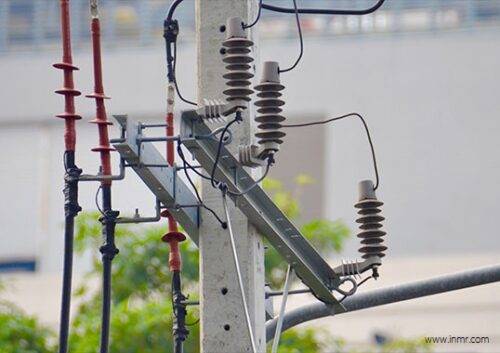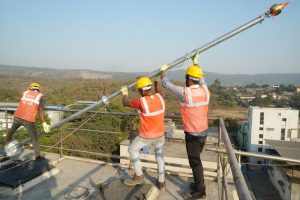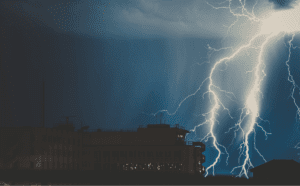Surge arresters are protective devices for safeguarding a piece of equipment from over-voltage transients by discharging or bypassing the surge current. It provides a low resistance path to the surge current protecting the system. The surge current can occur usually due to various reasons, like lightning or internal switching events. In normal switching surges, the voltage rise can be limited but harmful to the devices in the network. In the case of lightning strikes, the voltage rise can vary largely which is more challenging. Surge arresters are commonly used in power transmission and distribution systems. Their use is not just restricted to substations, transformers and poles but extends to circuit breakers in residential buildings too.
A surge arrester is different from a lightning arrester. It does not absorb a flash of lightning or is not used to protect a device from a direct lightning strike. It limits the voltage surge caused by lightning and protects the equipment installed in parallel. The surge arrester is passive during normal voltages. It turns on and starts to conduct, forming a path to the ground during a power surge.
How does a Surge Arrester work?
The commonly used metal oxide varistor surge arrester contains a series of metal oxide varistor blocks. These blocks are like a voltage-controlled switch, which acts as an insulator during normal line voltage. Once the voltage rises above the reference voltage of the surge arrester, the metal oxide varistor blocks start conduction. The extra current is passed to the ground directly protecting the equipment from overvoltage. The metal oxide varistor blocks are highly non-linear, so once the voltage drops below the reference voltage, the conduction stops.Thus a surge arrester can discharge any transient energy from the system in the form of current, preventing excessive voltage across the equipment. In simple words, we can say that a surge arrester is an open circuit to the normal running voltage but when a fault occurs, which is a voltage surge this fault voltage will enable the surge arrester to conduct and thus divert the fault current directly to the ground.
Why do we need a Surge Arrester?
A voltage surge is an unpredictable event, especially the ones occurring due to a lightning strike. Lightning is one of the main causes of voltage surges. Lightning that strikes the earth results in ground currents that pass through buried conductors. This induces a transient voltage that moves towards the ends of the conductor. The same kind of induction can happen in overhead and other conductors too. Surge arresters protect against induced voltage from a lightning discharge, but not against electrification caused by a direct strike to the conductor.
Another source of voltage surge includes voltage spikes caused due to switching. They are produced by ( by or due to) changes in operating conditions within a system. There are temporary overvoltages that occur due to ground faults in one phase and voltage rise in the unfaulted phase until the fault is cleared. Surge arresters protect such over-voltages also.
Different types of surge arresters are used in applications like substations and at utilization levels. For eg:
– In smaller substations or medium equipment, intermediate-type surge arresters are used.
– Secondary types are used in utility voltage levels.
– Substation type is used for higher performance and substation equipment etc.
– Surge arresters are, therefore selected very carefully according to the requirements and are designed and tested as per IEEE ANSI C62.1
Therefore, to protect the network from power surges, we have surge arresters which help all the extra charge flow to the ground. A surge arrester is installed such that it offers minimum resistance than the rest of the circuit and thus it will divert the fault current to earth easily. In most applications, a surge arrester is installed just before the conductor lands on each piece of equipment to be protected.
Thank you for reading the blog, Axis is a leading manufacturer and supplier of Electrical Components to over 80+ Countries. Talk to our industry expert by visiting our contact us section. You can also watch our videos by our experts – click here.








